In my last post, we discovered how to begin creating an amazing ‘first impression’ through personal branding. Your personal brand is the way you promote and present yourself to the world – often defined as the unique combination of skills and experiences that make you who you are. Cultivating an effective personal brand is becoming more important in the professional world. A gap analysis can be used to determine what is keeping you from attaining your desired state in life and will help you develop the path(s) necessary to elevate your personal brand.
To conduct a gap analysis, first, create a branding statement for yourself. An example could be, “Jackie is one of the top journalists in New York and is known for her unique style, friendly presence, warm smile, and philanthropic efforts.” Notice that the aforementioned branding statement includes her professional image as well as personality traits and her charitable contributions.
 Suppose you are Jackie and you are a 1st-year college student… what are some of the ways you could begin to establish your presence in journalism? Would an internship at a newspaper or news station help? If so, what steps would you take to find and start working at that internship? Current state for you may be ‘an inexperienced, journalism student’. The future state could be ‘one of the top journalists in New York’. The steps that you take between where you are and where you want to be should be documented in your gap analysis.
Suppose you are Jackie and you are a 1st-year college student… what are some of the ways you could begin to establish your presence in journalism? Would an internship at a newspaper or news station help? If so, what steps would you take to find and start working at that internship? Current state for you may be ‘an inexperienced, journalism student’. The future state could be ‘one of the top journalists in New York’. The steps that you take between where you are and where you want to be should be documented in your gap analysis.
Take a look at the example below:

The grid above shows you how to establish your current and future states, along with the potential paths to achieve your desired image. Most importantly, ask yourself, if you were a manager at your dream company, would you hire you? Why or why not? Of course, leave room for life unexpected moments, but have a clear path in mind too. In other words, have a goal in mind but be flexible in how you achieve it. Don’t be distracted by external influences—instead allow it to fuel your approach.
After you have figured out your image, start introducing yourself as your future state because there is power in your speech. In our example, Jackie, who is a student could start introducing herself as a future journalist who is currently in school honing her journalism skills. If Jackie were a manager at a tech firm who wants to be a CTO, for instance, she can introduce herself as a current BI manager with aspirations to be CTO. Now, of course, the setting would have to be appropriate to introduce your future professional self (think networking events or conversations where you are asked where you see yourself in 5-10 years).
To conclude, the point is this: ensure that you are clear on your goal, and create steps to achieve it; and most importantly, be open to editing your path because no journey is straight and clear-cut. But isn’t that the beauty of it?
About the author
 Richelle Desire is a Business Intelligence (BI) Professional with a Master’s degree in Business Intelligence, as well as a Master’s in Business & Entertainment. Richelle works to influence operational and strategic decision making. Her professional focus is in business intelligence and analytics while telling insightful, coherent data stories through sophisticated, yet clear data visualizations. She values diversity in technology and cultivating strong business relationships.
Richelle Desire is a Business Intelligence (BI) Professional with a Master’s degree in Business Intelligence, as well as a Master’s in Business & Entertainment. Richelle works to influence operational and strategic decision making. Her professional focus is in business intelligence and analytics while telling insightful, coherent data stories through sophisticated, yet clear data visualizations. She values diversity in technology and cultivating strong business relationships.
